Difference between Self-Pollination and Cross-PollinationPollination is the transportation of pollen from the stigma of one plant to the stigma of another plant typically by an animal or the wind, to help with fertilisation and seed formation. Pollinating agents can include insects, birds, bats, water, wind, and even plants when self-pollination takes place inside a closed bloom. Pollination frequently occurs within a species. When two different species are pollinated, hybrid offspring can result in both natural and plant breeding. 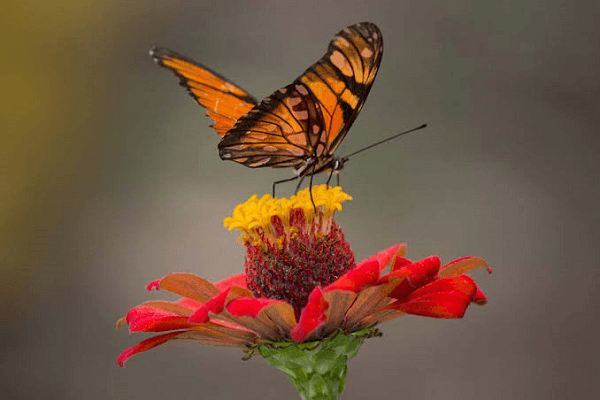
Christian Konrad Sprengel was the first person to discuss the pollination process as just an interaction between the flower and pollen vector in the 18th century. Numerous academic fields including botany, horticulture, entomology, ecology, and more aid in the research of pollination. Anthecology is the scientific study of insect pollination. It is crucial to horticulture and agriculture because pollination leads to fertilization which is necessary for fruiting. Studies in economics have also examined the advantages and disadvantages of pollination, emphasizing bees and how the activity impacts the pollinators themselves. The transfer of pollen out of an anther to a stigma of a particular bud or another flower is known as pollination in angiosperms. Gymnosperm pollination involves pollen movement from the male cone to the female cone. The pollen germinates as soon as it is transferred, creating the pollen tube and the sperm needed to fertilize the egg. The crops are grown today from plant breeding, which uses artificial selection to create cultivars. 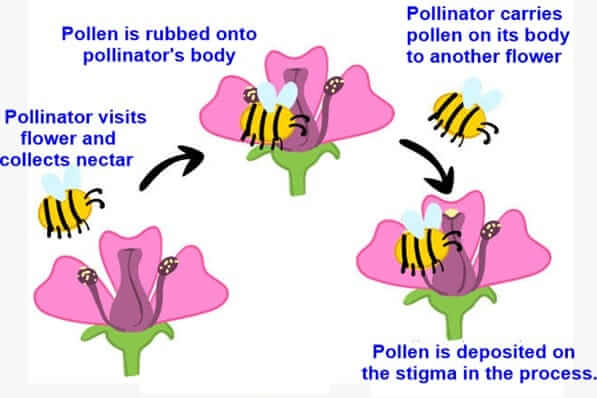
Importance of Pollination
Self-PollinationThe term "selfing," frequently used as a synonym, refers to more than self-pollination. Pollen from the same plant travels to the ovule and stigma of a flower (in flowering plants) this process is known as self-pollination (in gymnosperms). In autogamy, pollen is transferred from one flower's anther to another's stigma on the same blooming plant or from a gymnosperm's microsporangium to its ovule. Geitonogamy is the practice of transferring pollen from one flower's stigma to another flower's stigma from the same flowering plant. Some plants will defence against autogamy, like cleistogamy, which prevents flowers from opening or moving stamens that touch the stigma. OccurrenceAlmost no plants can pollinate themselves because Pollen carriers are majorly required (such as wind or insects). The process is mostly seen in a few legumes, like peanuts. Another legume, soybeans, has blooms that open and stay open all day for insect cross-pollination. In the absence of this, the flowers self-pollinate as they close. Various kinds of tridax, peas, sunflowers, and orchids also self-pollinate. Many self-pollinating plants have tiny, scarcely noticeable blooms that immediately deposit pollen onto the stigma before the bud ever opens. Self-pollinated plants can live in situations with low or even no populations of insects or other animals that might visit them because they use less energy to manufacture pollinator attractants. In addition to being able to thrive in conditions where the types of insects or other animals that would contact them are absent or extremely scarce, such as the Arctic or high altitudes, self-pollinated plants also consume less energy in the production of pollinator attractants. 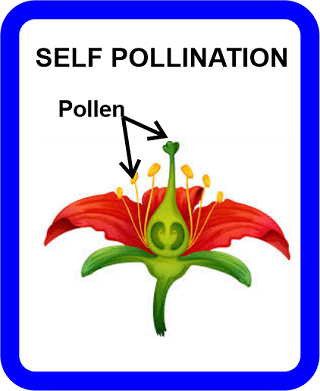
Self-pollination restricts the genetic diversity of offspring and could reduce plant life. Self-pollination is helpful because it enables plants to grow outside the range of acceptable pollinators or generate offspring in places where pollinator numbers are naturally variable or have significantly decreased. Advantages of Self-Pollination
Disadvantages of Self-Pollination
Cross-PollinationCross-pollination also known as heterogamy, is a type of pollination in which pollen grains containing sperm are transmitted from the cones or flowers of one plant to the cones or flowers of another plant that bears eggs. Cross-pollination promotes the growth of healthier progeny. 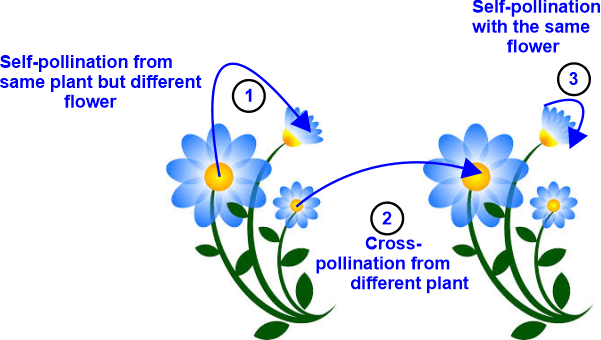
Gymnosperms (cone-bearing plants) and angiosperms (flowering plants) engage in cross-pollination, promoting cross-fertilization and outbreeding. Pollen can travel from plant to plant through the wind, as it does in conifers, or through symbiotic relationships with other creatures, such as bees, some birds, and bats that transmit pollen while consuming nectar. Insects and wind have a role in pollination in the natural world. This method can also be used by hand to produce offspring with specific characteristics such as colour or insect resistance. OccurrenceCross-pollination occurs when one plant's pollen fertilises the ovules of another plant of the same species. Cross-pollination is required for certain plants, like broccoli or apple cultivars, to produce viable seeds. Cross-Pollination will be done with the pollinators such as insects and other animals, as well as wind-blowing pollen from plant to plant. Wind-pollinated flowers are distinguished by a lack of colour, odour, or nectar and their stigmas which are arranged to capture airborne pollen. Animal-pollinated flowers will be distinguished by their structure, colour, or production of the scent. 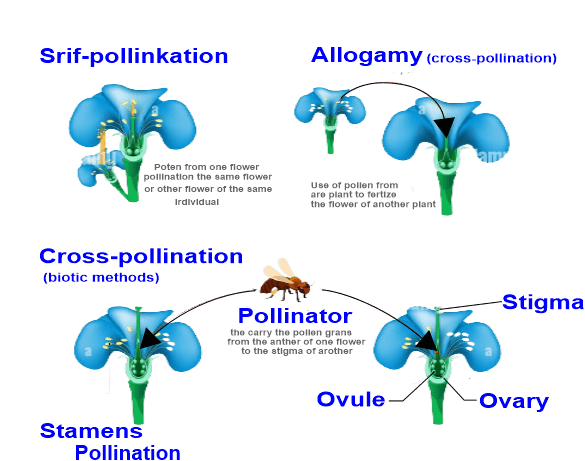
Advantages of Cross-Pollination
Disadvantages of Cross-Pollination
Similarities between Self-Pollination and Cross-Pollination
Difference between Self-Pollination and Cross-Pollination
Next TopicDifference between
|
 For Videos Join Our Youtube Channel: Join Now
For Videos Join Our Youtube Channel: Join Now
Feedback
- Send your Feedback to [email protected]
Help Others, Please Share










